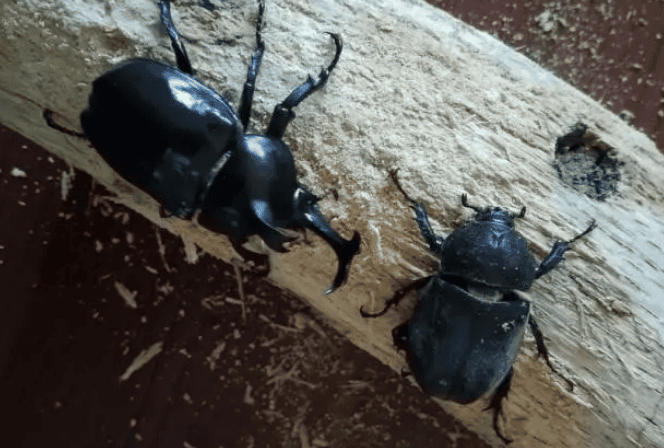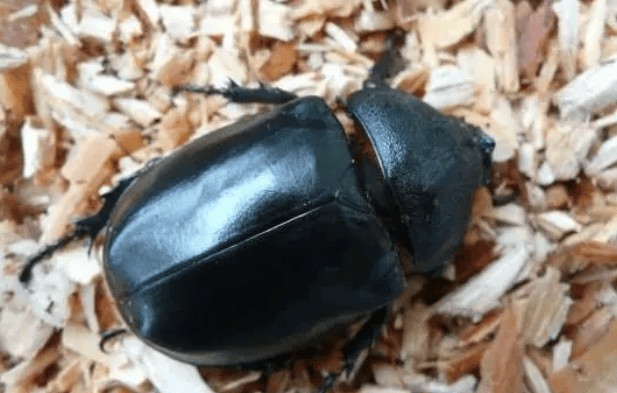Do you know how many types of unicorns there are?
1. Domestic unicorns: There are two subspecies of unicorns in China, namely: the original name subspecies of unicorns and the Taiwanese subspecies of unicorns.
1. The original subspecies of Allomyrina dichotoma dichotoma:
The Allomyrina dichotoma dichotoma, which is widely inhabited in my country (all distributed in East China, South China, and North China), belongs to the Allomyrina dichotoma dichotoma. Rhinoceros beetle, formerly known as subspecies, is the most common and entry-level species. It is large and majestic. It is not unusual for large individuals to exceed 90mm+. Breeding and raising are also relatively easy. If the number of eggs laid is less than 50, it is not considered a burst. The larvae have strong vitality and can still be fed in waste soil. Therefore, unicorns are quite popular among insect enthusiasts in China.

Note: The body color of domestic unicorn fairy is usually red to Black and red are normal body colors and are very common in the wild. There is no such thing as red blood.
2. Allomyrina dichotoma tunobosonis (Allomyrina dichotoma tunobosonis):
A subspecies distributed in Taiwan, our treasure island, generally inhabits low- and medium-altitude mountainous areas. Slightly different from the original subspecies, they generally appear from May to July, and are not easy to see in August.
The characteristics of the Taiwanese subspecies are that the head horns are relatively flat, the bifurcation of the head horns is close to a V shape, the chest horns are slender, and there is a thin layer of hair on the elytra. The maximum body length of the male can reach about 85mm. Breeding and raising are also very easy, easy to give birth to and easy to raise.
2. Southeast Asia's rhinoceros: the Thai subspecies of rhinoceros and the independent variety Burmese rhinoceros, mainly concentrated in Thailand, Myanmar, Vietnam, Laos and other countries in the Indochina Peninsula.
1. Allomyrina dichotoma politus:
Commonly known as Taixian, it is mainly distributed in Thailand, Myanmar, Laos and northern Vietnam. Its biggest feature is its head. The chest horns are very thick, and the male body length can reach up to 80mm+. It does not seem to be particularly long, but its body shape is thicker and stronger, and the overall body is very "fit". The black body color of Taixian is extremely glossy, so it is often called the Black Diamond One-horned Celestial by insect friends.
2. Burmese Allomyrina kanamorii:
This species currently does not belong to the Allomyrina subspecies, but is recognized as an independent species. Burmese unicornia was newly published in 2005 and is only distributed in the northwest region of Myanmar. This species currently has no official Chinese name. It is only known as the Burmese unicorn fairy because it was found in Myanmar.

The horns of the Myanmar unicorn fairy are very short, but they are small individuals. Compared with unicorns of the same size, its horns are thicker and longer, while the opposite is true for larger individuals. In addition, the outer edge of its pronotum is rounded, and the rear of its outer wings is rounder and larger. The current breeding record for an individual is 54.9mm (2016).
In addition to the various subspecies of Rhinoceros introduced in this article (including Burmese Rhinoceros), there are two independent species whose ownership is more controversial. Species: Allomyrina pfeifferi and Allomyrina davidis. The former is a cute pet type and is mainly distributed in Borneo, the Malay Peninsula, Sumatra, etc.; the latter is mainly distributed in my country and belongs to the national second species. Level protected species.
Okay, this is the end of the explanation of the one-horned fairy series. Finally, I wish you all can raise a very large fairy, haha!

 扫一扫微信交流
扫一扫微信交流
发布评论